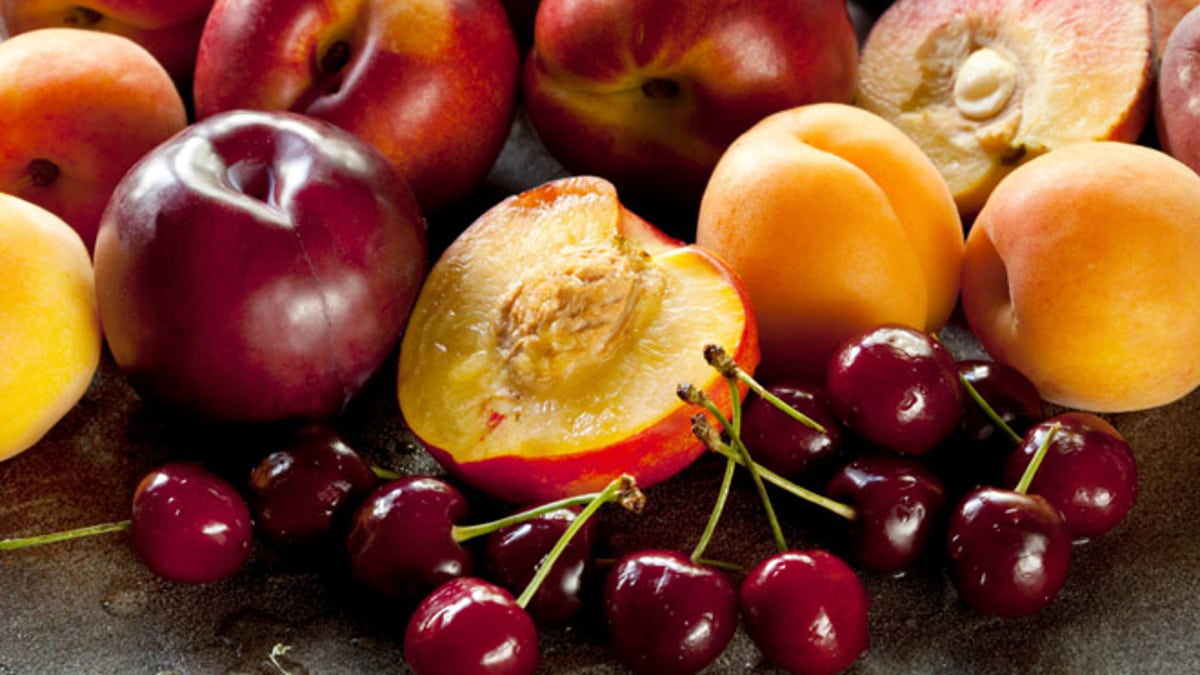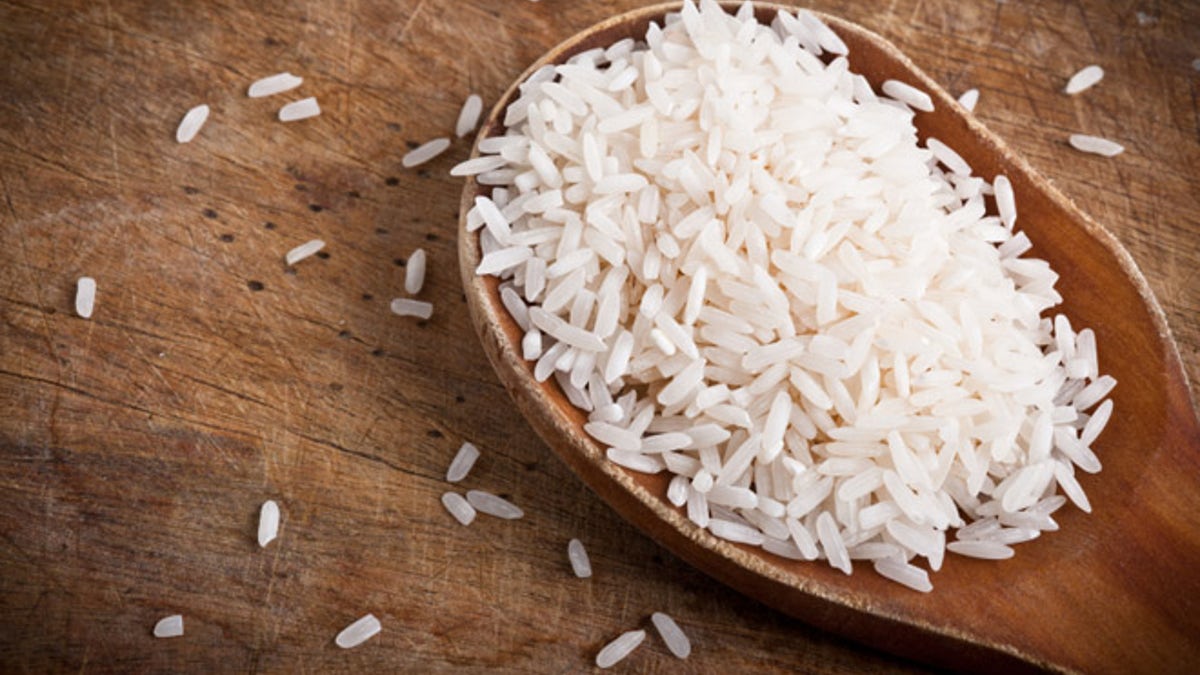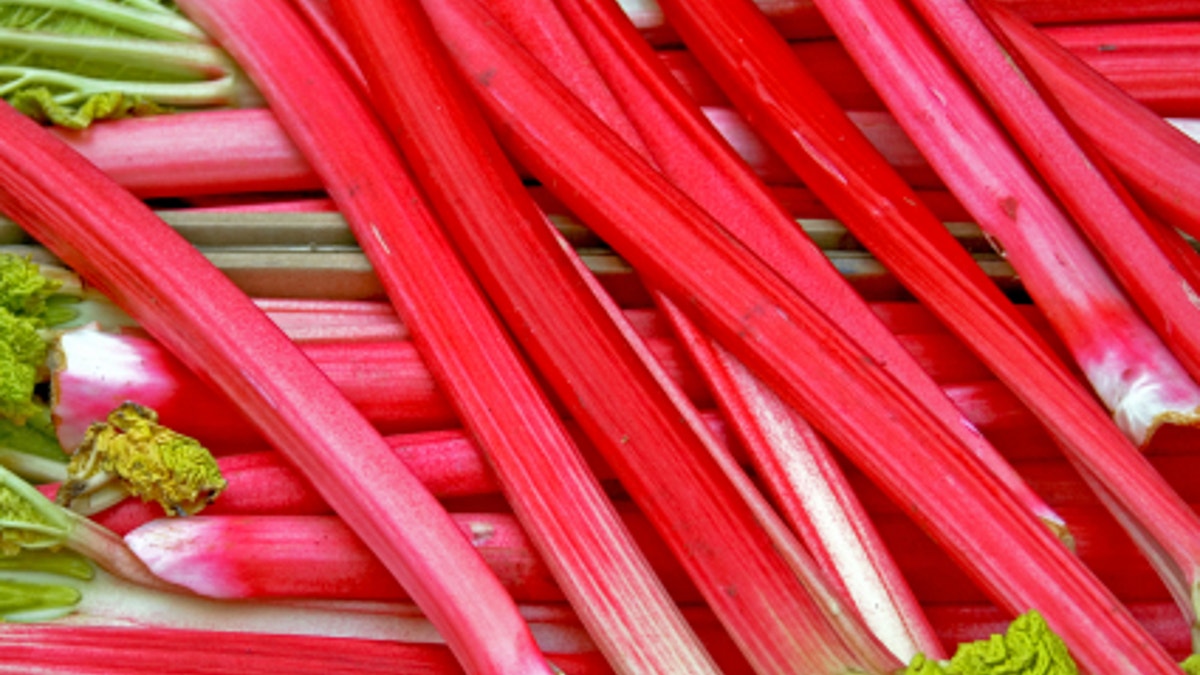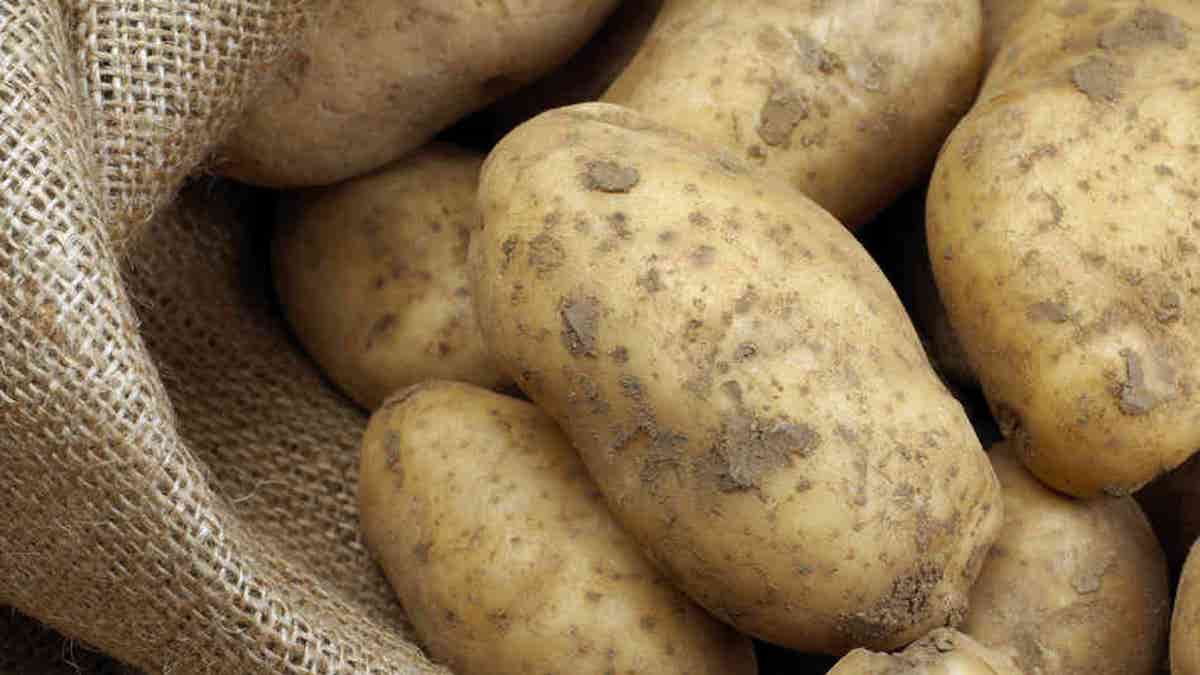We’re not trying to say that the world is out to get you, but at times you might want to exercise caution. Each of these eight otherwise delicious and healthy fruits and vegetables have naturally occurring toxins that, while safe to ingest every so often (the body is pretty resilient that way), can definitely kill you depending on how, and how much of it you decide to eat. We’ve also done some quick math* to figure out how much you can eat before things get…lethal. Now go forth and satisfy that morbid curiosity:
*Note: Numbers are by no means a strong suit of ours, so while we’re reasonably confident in the algebra used to come up with these quantities, please excuse any calculation errors!
1. Cherries, Apricots, Plums, Peaches: Cyanide

Don't freak out if you accidentally swallow a cherry pit—they're rarely poisonous when eaten whole—but whatever you do, don't eat a broken pit. Because aside from tasting really bitter and generally being impossible to chew, the stones of certain stone fruits, like cherries, apricots, plums and peaches, contain cyanogenic compounds—science talk for "stuff that your body can turn into cyanide." So, how many cherry pits is a lethal amount of cherry pits? After some quick Googling, we found that hydrogen cyanide is lethal at about 1.52 milligrams per kilogram, meaning that it takes little more than 0.1 grams (a dime weighs about one gram) of the toxin to dispatch a 150-pound human. A single cherry yields roughly 0.17 grams of lethal cyanide per gram of seed, so depending on the size of the kernel, ingesting just one or two freshly crushed pits can lead to death.
2. Rice: Arsenic

Rice with wooden spoon on wooden table. (iStock)
Rice (especially rice grown in Texas) contains arsenic, a toxin that can cause bad things like vomiting, abdominal pain, and vertigo when consumed in large quantities. The highest levels are found in brown rice, the lowest in instant rice. Despite the toxin's presence, it would be incredibly difficult to poison yourself by eating too much rice in one day. That's not to say nothing bad will happen; consistent exposure to even low doses of arsenic over time can lead to heart disease and bladder cancer. According to the FDA, there is anywhere from 2.6 to 7.2 micrograms of inorganic (vs. organic, which is much easier for your body to metabolize) arsenic in one serving of rice. Given that it would take about 50 grams of arsenic to kill the average 150-pound adult, you'd have to eat nearly 7 million servings of rice—in one sitting—to achieve death by rice. If we assume that one serving is about 1/4 cup, that's almost 1,800 cups of rice!
3. Rhubarb: Oxalic Acid

A bunch of fresh organic red rhubarb (iStock)
Brightly colored rhubarb stalks are great in cocktails and for making tangy-sweet pie fillings, but the plant's leaves contain oxalic acid, a chemical that's also used in household bleach and anti-rust products (yikes!). If that wasn't enough, eating the leaves can cause burning sensations in the mouth and throat, nausea, vomiting, convulsions, and even death. Even cooking the leaves won't get rid of the acid. If, despite this, you still want to try eating rhubarb leaves, you'll be glad to know that they're not severely toxic. According to a study from the Hampshire College (.pdf), a 130-pound woman would have to eat around 10 pounds of rhubarb leaves to show symptoms of oxalic acid poisoning.
4. Potatoes: Solanine

Depending on how they're handled, potatoes can produce solanine, a natural pesticide that's toxic to humans. The compound is particularly concentrated in potatoes that have started to turn green, and especially when they've begun to sprout. Potential symptoms of solanine poisoning include vomiting, diarrhea, and sometimes cardiac arrest. The good thing is that aside from looking kind of unappetizing and tasting slightly bitter, you'd have to eat an excessive amount of green potatoes to actually get solanine poisoning. A study by the University of New Mexico shows that a 100-pound adult would have to eat a full pound of completely green potatoes before showing symptoms, which seems pretty difficult to do by accident?
More from Bon Appétit
8 Foods That Could Kill You (If You Eat Enough of Them)
10 Rules for Cooking with Pumpkin
10 Candies That Adults Love But Kids Hate
